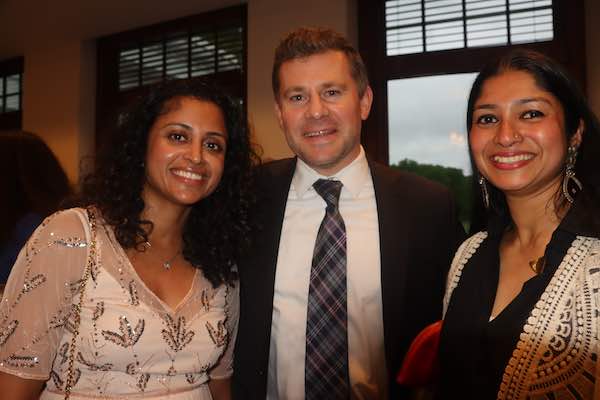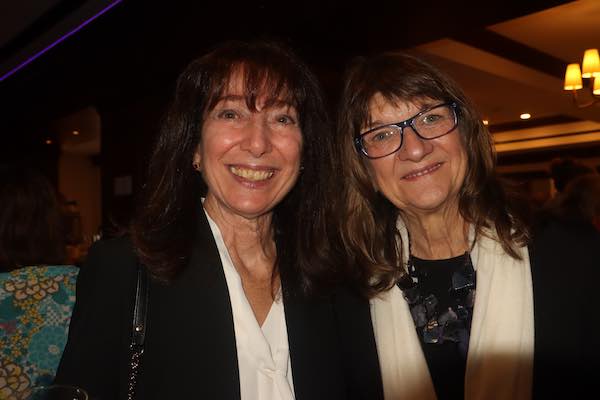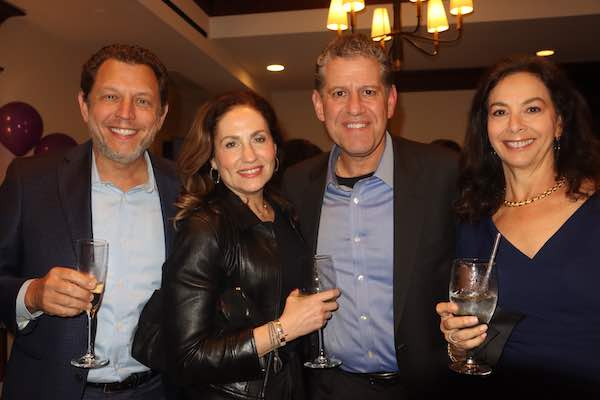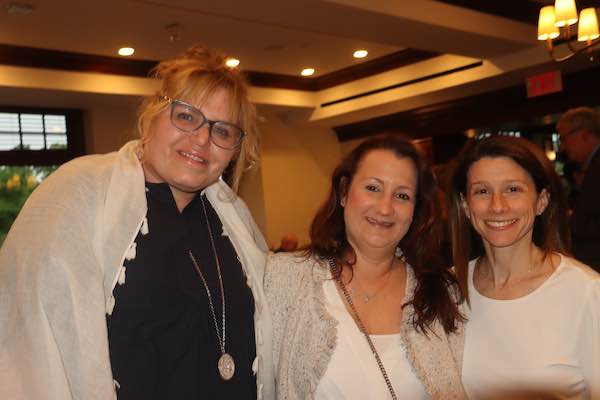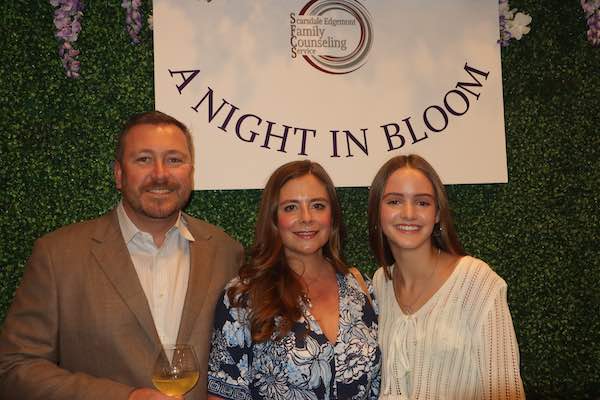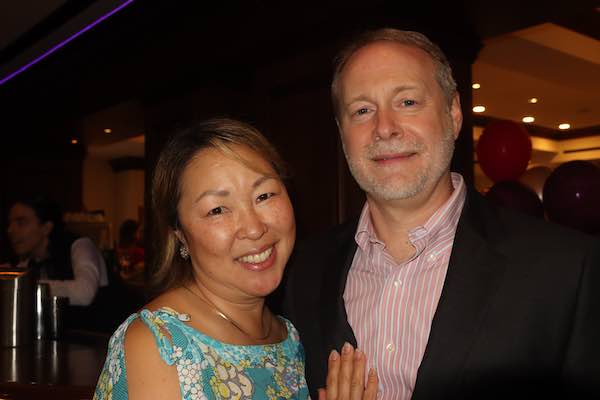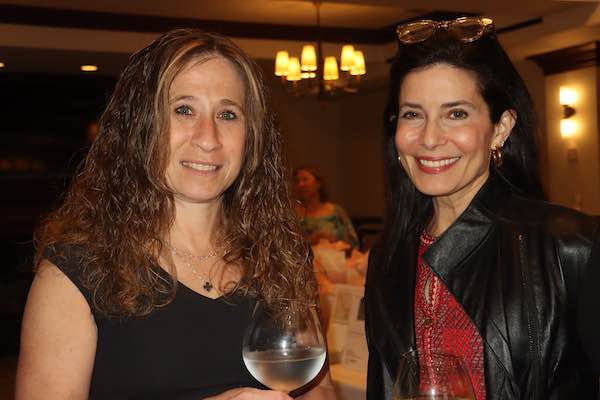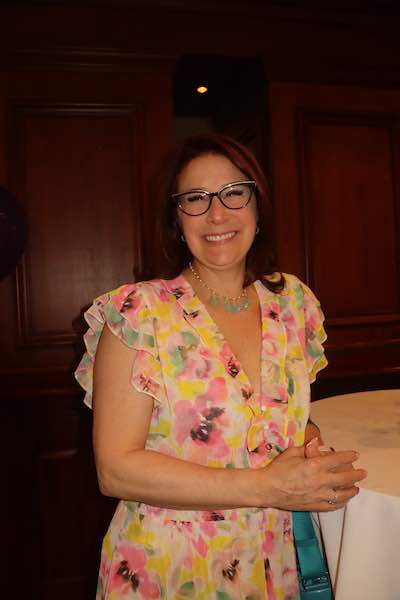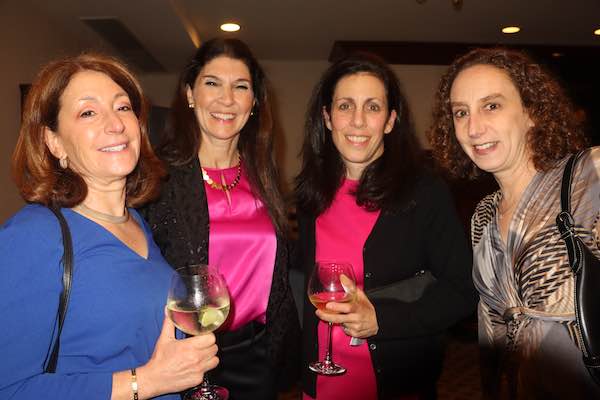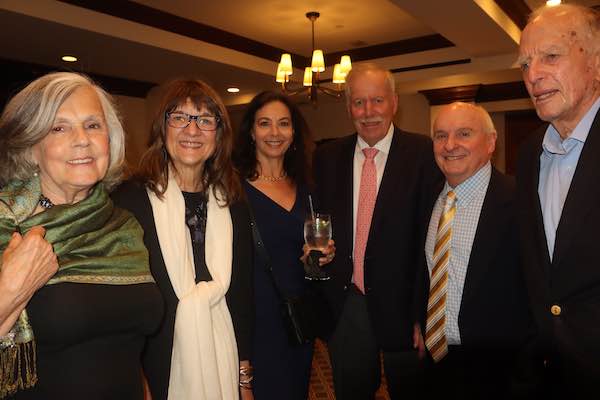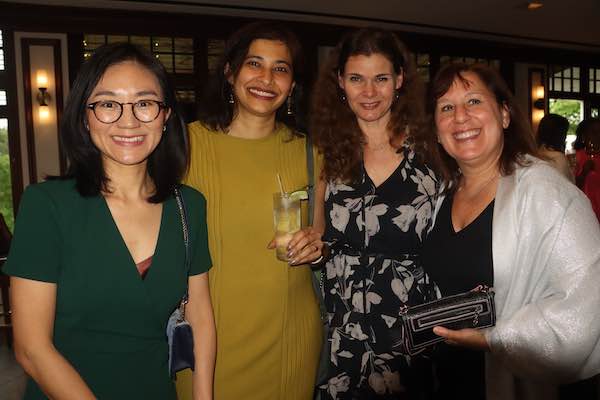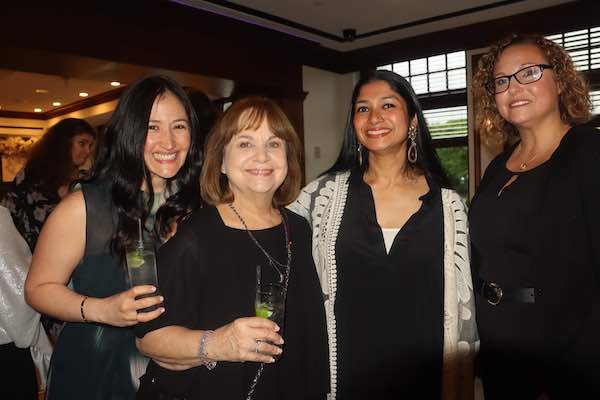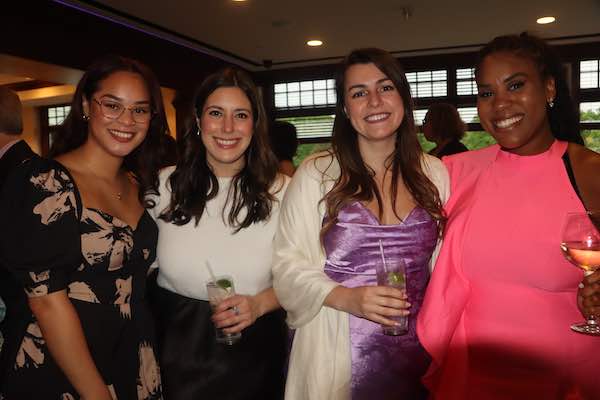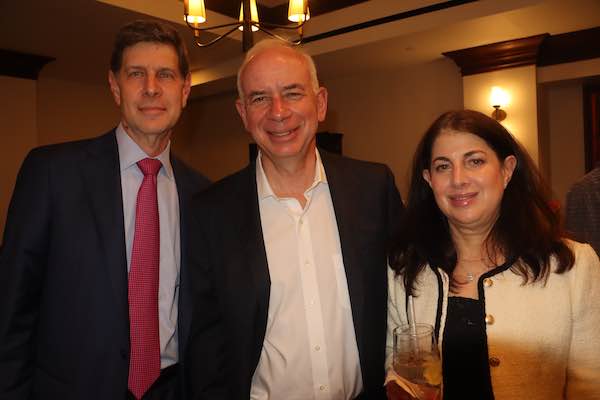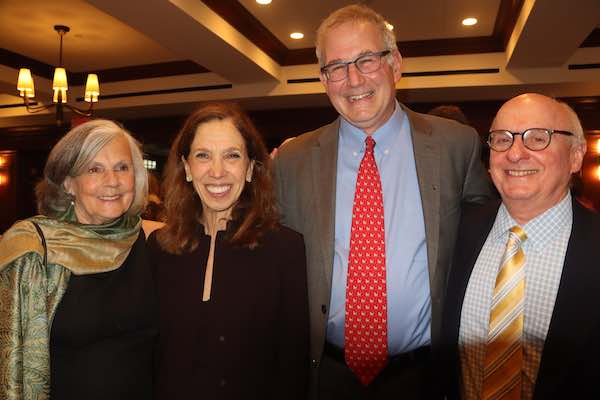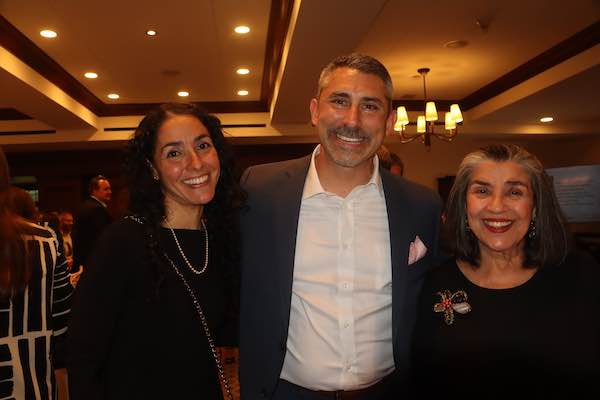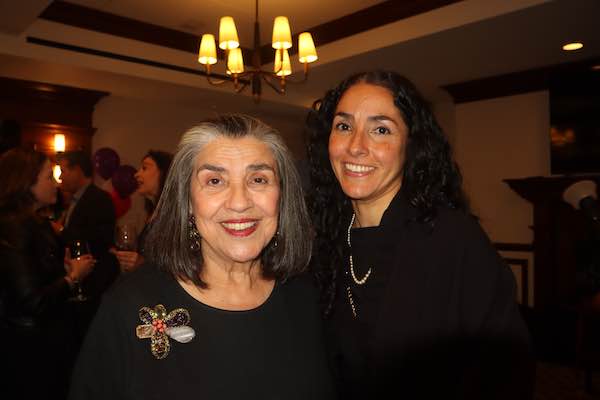Sounds of Scarsdale: The 4th Annual Scarsdale Music Festival
- Details
- Written by: Eian Tsou
- Hits: 2210
 Crowd grooves to the music: Photo credit Jacob SacconeOn Saturday, June 1st, thousands of people gathered with friends and family to soak in the sun, listen to riveting musical performances, and engage in fun carnival games at the 4th annual Scarsdale Music Festival (SMF).
Crowd grooves to the music: Photo credit Jacob SacconeOn Saturday, June 1st, thousands of people gathered with friends and family to soak in the sun, listen to riveting musical performances, and engage in fun carnival games at the 4th annual Scarsdale Music Festival (SMF).
Kicking off at noon, the festival transformed the Scarsdale Village into a bustling hub of entertainment. The usually tranquil streets grew alive with a collage of vibrant sights, sounds, and – undoubtedly – smells.
Indeed, a myriad of food trucks flooded the area. Festival-goers were treated to an impressive array of options for grub, catering to every palate and preference. Patrons could enjoy sweet, indulgent cookies sold by “Crumbl” and “Baked in Color” or savory, cheesy pizza served by “Pizza Vitale Truck” or cool off with a scoop of “Longford's Ice Cream” and a cup of Hawaiian shaved ice. “Poké Motion” was particularly popular, with dozens of people lining up for a bowl of “miso ginger salmon” or “peanut saté chicken."
 Inside the tasting tent: Photo credit Jacob Saccone
Inside the tasting tent: Photo credit Jacob Saccone
For the adults, the SMF Grand Tasting Village featured a selection of elite wines and tastes from around the world from Scarsdale’s new wine store Amici dei Vini, beer from the Simple Motive Brewing Co. and more from Dobbs and Bishop Fine Cheese, Meritage, Micheline, Miles the Prince, M.S. Walk, and PopoJito allowing guests 21+ to indulge in a uniquely curated tasting event. Yet, while the food and drinks certainly played an important role in the whole experience, it can’t be the Scarsdale Music Festival without a little bit of music.
“That’s why I’m here,” commented Rhys Mulvey, a freshman at Scarsdale High School. “I’m in a band, so I really like music. You can come here and just hang out with friends – it’s a great environment… more events like this make Scarsdale an even greater place to be.”
Kids enjoyed a carnival for their own – including having their hands painted, navigating an inflatable obstacle course, playing arcade games, a giant Connect 4 and mini hoops.
 The Del Bocas: Photo credit Jacob Saccone
The Del Bocas: Photo credit Jacob Saccone
This year’s musical lineup, after an extensive selection process from over 70 submitted applicants, featured a diverse range of genres from R&B to opera to acoustic music featured on the all-new acoustic stage. The live performances had the crowd dancing, singing along, and simply enjoying the spirited atmosphere.
In the beginning, bands like “Rennie Pincus & Friends” provided a lively start to the festival. As the afternoon progressed, “The Del Bocas” rocked the crowd with perennial favorites including the Monkees I'm a Believer, Carole King’s, I Feel the Earth Move, Say You Love Me from Fleetwood Mac and Tom Petty’s American Girl. The music played throughout the afternoon by an impressive line-up of talent including another Westchester based band, Skyfactor.
 Just Call Me By My Name with Marcy Berman Goldstein: Photo credit: Jacob Saccone
Just Call Me By My Name with Marcy Berman Goldstein: Photo credit: Jacob Saccone
However, the stars of the show were the performers from the “Daniel’s Music Foundation” – a non-profit organization dedicated to providing music programs for individuals with developmental and physical disabilities. “It feels amazing to be here,” said George Dennehy, who had been born without arms and played the guitar using his feet – while singing. “Music is such a universal language… people with disabilities deserve a chance to learn and express in that way… the crowd was so warm. So kind and so welcoming. I’m not from here, but I can tell that this is a great neighborhood.” Face painting!Community spirit was at an all-time high, with local organizations like SPCA Westchester playing their part in the festival’s success. Numerous stalls offered arts and crafts, opportunities for teens, and more. This year’s event has already sparked excitement for the next festival, promising even more fun and entertainment for all ages.
Face painting!Community spirit was at an all-time high, with local organizations like SPCA Westchester playing their part in the festival’s success. Numerous stalls offered arts and crafts, opportunities for teens, and more. This year’s event has already sparked excitement for the next festival, promising even more fun and entertainment for all ages.
Marcy Berman Goldstein, who produced the event, said, “We are incredibly proud of our exceptional, family-friendly event, which drew over 5,000 attendees. With 16 extraordinary bands performing on three live stages, delicious food options from over a dozen vendors, a VIP Grand Tasting Village, and expanded activities, there was something for everyone.
The success of the 2024 SMF would not have been possible without the generosity and support of our event sponsors, talented musicians, participating vendors, and community partners. We are incredibly grateful for our ongoing partnership and support from the Village of Scarsdale. We would also like to extend a special thanks to the Conservation Advisory Council for all of their efforts to ensure SMF continues to be a zero-waste event.
On behalf of the SBA and the entire SMF team, it is our honor to have chosen Daniel’s Music  Festival bubbles: Photo credit: David SteinbergFoundation as this year’s charitable recipient, a non-profit empowering individuals with disabilities through music. We were thrilled to feature artists from DMF’s music label, 'Just Call Me By My Name,' whose spectacular and talented performances left a lasting impression on all attendees.
Festival bubbles: Photo credit: David SteinbergFoundation as this year’s charitable recipient, a non-profit empowering individuals with disabilities through music. We were thrilled to feature artists from DMF’s music label, 'Just Call Me By My Name,' whose spectacular and talented performances left a lasting impression on all attendees.
The SBA is thrilled to continue enhancing the vibrancy of our downtown center by bringing cultural arts and diversity and expanding our community’s connection to Westchester County and the greater Tri-State area. We look forward to next year's event!”
Writer Eian Tsou is a current junior at Scarsdale High School who loves the creative process of writing. Outside of writing, Eian loves to volunteer, play with his dogs, kick around a soccer ball, and eat tasty foods.
 Kids got game: Photo credit: David Steinberg
Kids got game: Photo credit: David Steinberg
Omer Wiczyk to Lead the Scarsdale Forum: Paulin and Mayer Address Key Issues
- Details
- Written by: Joanne Wallenstein
- Hits: 2344
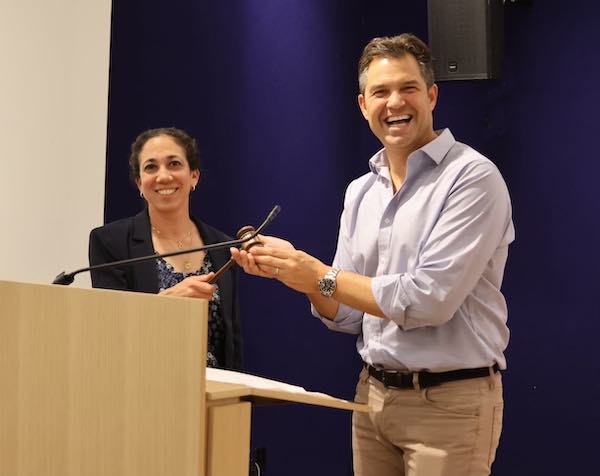 Sarah Bell and Omer WiczykHow can the Village keep a 120 year old organization vital and relevant? That was on the minds of the leadership of the Scarsdale Forum when they held their annual meeting on Thursday night May 23, 2024 to pass the leadership gavel from current President Sarah Bell to this year’s President Omer Wiczyk.
Sarah Bell and Omer WiczykHow can the Village keep a 120 year old organization vital and relevant? That was on the minds of the leadership of the Scarsdale Forum when they held their annual meeting on Thursday night May 23, 2024 to pass the leadership gavel from current President Sarah Bell to this year’s President Omer Wiczyk.
The Forum, originally called the TVCC, has seen its mission morph over the years. The TVCC formerly acted as unelected overseers of Scarsdale’s Non-Partisan Process, placing 11 selected members of the Procedure Committee that governed the election of Village Trustees. The Citizens Nominating Committee was chaired by two members of the TVCC rather than elected by the nominators who were elected in a general vote. All that changed and now the leadership of the Citizens Nominating Committee is voted on by the members, and the Procedure Committee is led by those who have completed three years of service on the CNC.
Now the Forum’s mission is to “provide a platform for meaningful community dialogue about municipal, school and related civic affairs. Forum activities and committee work afford members a variety of opportunities to be informed, to express personal views and to become involved in addressing the issues, choices and solutions that directly impact our community.” The group produces in-depth reports on issues such as education, downtown development and sustainability that are submitted to the Board of Education and Village Board for review.
At the May 23 meeting, departing President Sarah Bell described her efforts to “move the Forum into a new generation.” She said, “It wasn’t an easy year. It was hard. It seemed like we didn’t want to move into the future.” However, working to facilitate “inclusive engagement,” they recruited eight new board members and formed the Scarsdale Forum Youth Advisory Panel to engage youth in civic affairs. She recognized six high school students in the audience calling them, “interesting, interested and engaged.”
She also mentioned publication of their “mini focus” newsletter, saying it was the most opened publication in five years.
She welcomed incoming President Omer Wiczyk to the podium and said she was excited for the future.
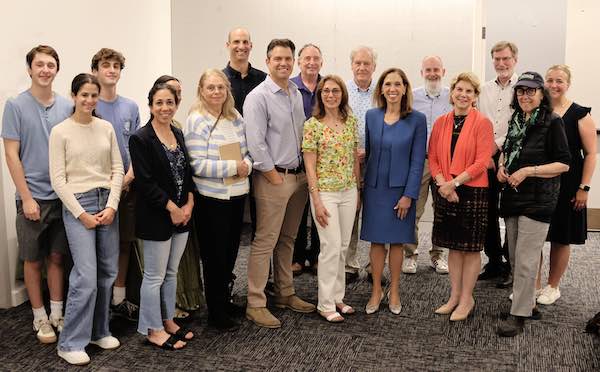 Forum members and students with Amy Paulin and Shelley Mayer.
Forum members and students with Amy Paulin and Shelley Mayer.
Wiczyk thanked Bell for her energy and laughed saying, “We are going to have an Instagram account!”
Taking the stage he said, “I have dedicated my life to public service – I believe that by volunteering you can make your community a better place. We are all on the same page. We may disagree about how – but we all want to move forward. One of my themes will be civility.
He invited Forum members to participate, saying “I want to hear ideas on what we should change – and should not change. Inclusivity is vital when change is afoot.”
He welcomed the evenings speakers, State Assemblywoman Amy Paulin and State Senator Shelley Mayer who offered comments on what’s going on in NYS government and on their priorities this year.
Amy Paulin referred to the struggle to reach compromise in Albany saying, “We battle and we move forward.” She said that the COVID crisis had decreased contact between members and results in antagonism. Now she said, “civility has returned because we see one another.”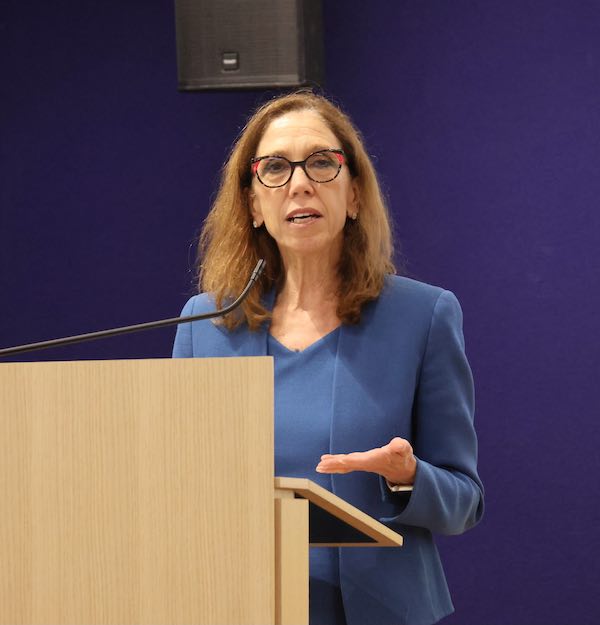 Paulin addressed the group on a wide range of state and local issues.
Paulin addressed the group on a wide range of state and local issues.
She noted that our districts two representatives are responsible for 87% of the state budget, with Paulin chairing the Assembly’s health committee and Mayer, chairing the Senate’s education committee. She discussed the drawn out fight over redistricting, restoring funding for cuts in the health care budget and challenges to the CDPAP program which allows residents to receive benefits for caring for relatives at home.
Paulin brought up two bills she is sponsoring that she is working hard to get passed this session. One she calls the Harvey Weinstein bill as it was prompted when Weinstein’s rape conviction was overturned in New York. This bill would allow the court to admit evidence that a defendant has committed any prior sexual assaults in a criminal proceeding in which a defendant is accused of sexual assault.
Second, Paulin is championing a bill called “Aid in Dying,” to allow terminally ill patients to request pharmaceuticals for the purpose of speeding up their deaths and providing legal protections to the physicians who prescribe them.
Turning to local issues, Paulin is working with Mayer to pass legislation to allow the Village of Scarsdale to refund tax fees and penalties that were incurred due to a post office failure. She is also working on legislation to assist Scarsdale Village Ambulance Corps and on another bill to help non-profits collect funds.
She is working on getting funding to alleviate flooding on the Hutchinson River Parkway and to prevent Lake Isle in New Rochelle from overflowing and damaging property.
On a personal note, she choked back tears as she announced plans to move to New Rochelle after 44 years in Scarsdale. She said, “it is an understatement to say that I am devastated. I will never feel as connected to another community as I am now.” She said, “I will always say that this is my home.”
 County Executive George LatimerState Senator Shelley Mayer explained that she represents a “big, complicated district.” In the Senate she said there are 42 Democrats where “everyone has their own opinion but they pull it all together.” She said, “with strong leaders we move in the right direction.”
County Executive George LatimerState Senator Shelley Mayer explained that she represents a “big, complicated district.” In the Senate she said there are 42 Democrats where “everyone has their own opinion but they pull it all together.” She said, “with strong leaders we move in the right direction.”
Turning to the issues she is working on she discussed the following:
-We are re-visiting the state funding formula. School districts like Scarsdale receive very little funding. The formula is out of date. Districts in Long Island receive more. We need a fairer way for the state to pay out based on need.
She gave credit to Scarsdale for passing the school budget saying, “It is a sign of support for education when a district passes a budget above the state tax cap.”
She is in favor of a bill to have one ex-officio student on each school board.
Security : She said that some school districts have hired off duty police for school security and she is working with the Governor to get money for security for those schools.
About the state university system she vowed, “We will invest in SUNY and CUNY schools and increase the TAP awards.”
About dissent on college campuses, she said, “We have to do more at colleges to make sure students don’t feel afraid. We need to come up with effective solutions and better policies.
She discussed new legislation to increase the list of crimes that can be termed hate crimes.
She expressed concern about brazen retail theft and a feeling of lawlessness. They have proposed to make it a crime to assault a retail worker and to make it legal to aggregate the amount of items stolen to add up to $1,000 to go from petty to grand larceny. Last there is a proposal to offer a tax break for small businesses that have increases in costs due to security.
She expressed support for the passage of the ERA amendment and also proposed the creation of a senior cabinet officer for flood management, or a “flood czar,” to go to on the state level to address flooding.
County Executive George Latimer surprised the group by stopping in as well. He’s been working hard as an advocate for Westchester County while also campaigning to represent Congressional District 16 in Congress. The primary is on June 25, 2024.
The meeting offered a bird’s eye view on what’s going on in Scarsdale, the county and the state from some hardworking representatives.
Also elected to lead the Scarsdale Forum are the following:
1st VP/President-Elect: Jill Spielberg
2nd VP: Alexandra Vargo
Treasurer: Elaine Weir
Secretary: Jeanne-Marie Castiello
Megan Simon Honored by Scarsdale-Edgemont Family Counseling Service
- Details
- Written by: Lisa VanGundy
- Hits: 2225
 Megan Simon with her family.At a festive gala Thursday, May 16 at the Scarsdale Golf Club, Scarsdale Edgemont Family Counseling Service (SFCS) lauded their staff, volunteers and community partners and awarded Megan Simon the 2024 Rising Star Award in recognition of her active history as a volunteer, leader and contributor to many Scarsdale organizations. The annual Rising Star Award recognizes leaders in the Scarsdale Community who have demonstrated dedicated, impactful and active community service.
Megan Simon with her family.At a festive gala Thursday, May 16 at the Scarsdale Golf Club, Scarsdale Edgemont Family Counseling Service (SFCS) lauded their staff, volunteers and community partners and awarded Megan Simon the 2024 Rising Star Award in recognition of her active history as a volunteer, leader and contributor to many Scarsdale organizations. The annual Rising Star Award recognizes leaders in the Scarsdale Community who have demonstrated dedicated, impactful and active community service.
Executive Director Jay Genova acknowledged SFCS’ 104 years of service to the individuals, families and communities of Scarsdale and Edgemont and thanked local, 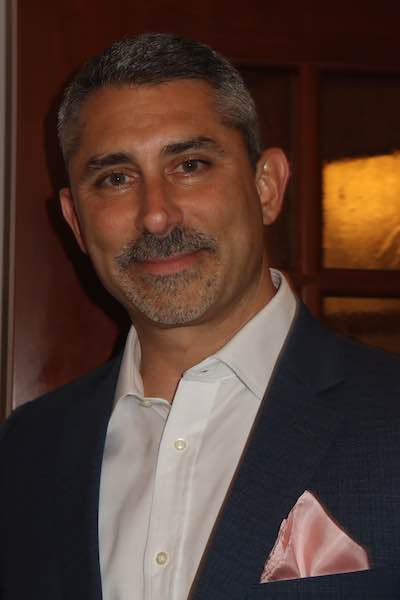 Executive Director Jay Genovacounty, state and school board officials for their dedication to SFCS partnerships and their dedication to the mission. Without community support, this work would not be possible. SFCS functions in a spirit of partnership for the benefit of the entire community with counseling services, parent support groups, vital aging in place initiatives, and has staffed the school district with mental health professionals. Through the new child services division, children are being cared for by using modalities of art to soothe stress, which requires space, materials and talented staff. Improving health, safety and wellness of families and children is in the organization’s DNA. Jay highlighted the importance of community support for these programs.
Executive Director Jay Genovacounty, state and school board officials for their dedication to SFCS partnerships and their dedication to the mission. Without community support, this work would not be possible. SFCS functions in a spirit of partnership for the benefit of the entire community with counseling services, parent support groups, vital aging in place initiatives, and has staffed the school district with mental health professionals. Through the new child services division, children are being cared for by using modalities of art to soothe stress, which requires space, materials and talented staff. Improving health, safety and wellness of families and children is in the organization’s DNA. Jay highlighted the importance of community support for these programs.
Amy Nadasdi thanked Jay, who she said runs the organization with integrity, kindness, patience and skill. She also lauded the extraordinary Gala committee, led by Wendy Gendel for the evening’s gathering. She said, “Organizing an event like this is a major challenge, and, to Wendy and your Gala committee, I know you’ve put your collective hearts and souls into this effort.” She also thanked the sponsors and vendors who contributed to the successful event.
Kathy Stahler introduced Megan Simon who she said has risen to leadership with drive and determination, and has contributed greatly to Scarsdale schools and the community at large.
Jordan and Lisa Copeland, the previous recipients of the Rising Star Award, presented this year’s award to Megan Simon.
Megan thanked the many people who helped pick up her kids so she could spend so much time volunteering. She’s had success in college and her professional career by virtue of living and growing up in Scarsdale. She also mentioned the importance of volunteering and giving back. She said, “students benefit when we all work together. Positive change is possible, and kids benefit from being in the school community. Our children deserve the best support possible. Volunteering is a passion. SFCS embodies the qualities of commitment, kindness and collaboration and gives back to the community. You get joy from helping others and being part of a wonderful organization.”
Megan thanked everyone in attendance and said, “none of this happens without a village, and this is the best village.”
About Megan Simon
Meg Simon (nee Wolters) grew up in Scarsdale, attending Greenacres Elementary School, Scarsdale Middle School, and Scarsdale High School. She moved back to Scarsdale in 2014 with her husband Chris Simon to raise their two children: Patrick (age 14) and Devon (age 12). Attracted by the excellent schools and her own experience growing up, Megan was eager to get involved in supporting community organizations.
Meg joined several Parent Teachers Association (PTA) committees at Greenacres School and at The Hitchcock School, then rising within just a few years to become Greenacres PTA President and the PTO President at The Hitchcock School. As Greenacres PTA President, she worked with Parent Teacher Council leadership, the District cabinet and Board of Education towards a successful $68M bond referendum. The majority of those funds were used for the renovation of Greenacres in addition to addressing health and safety issues at all seven Scarsdale schools. Her leadership, dedication and relationships within the school district then led her to be named PTC President in 2021-2022. As PTC President during part of the Covid Pandemic, Meg served on the District Restart Committee as well as on the Scarsdale Middle School Restart Committee. These committees helped plan and facilitate a smooth transition for both students and staff back to in-person classes.
In addition to her leadership of the PTA and PTC, Meg was named co-president of the Scarsdale Schools Education Foundation (SSEF) in 2021, a role she continues to this day. Meg has overseen SSEF’s donations of the upgraded cameras and microphones used by teachers to enhance remote learning during the COVID pandemic. Recently, Meg has been involved with SSEF’s grants to Scarsdale Middle School for the library renovation and to Scarsdale High School for flexible furniture which can be moved and reconfigured in classrooms to create different learning environments that best meet teachers’ needs.
In 2023 when her son entered high school, Meg joined the board of Maroon & White, the athletic teams support organization. Meg currently serves on the journal committee, which is Maroon & White’s largest fundraiser.
Meg has also been on the board of Scarsdale Golf Club for the last five years, serving as the Head of Admissions, Secretary, Vice President and, now, President. She will continue to serve on this Board for the next two years.
Prior to her return to Scarsdale, Megan worked in advertising sales and marketing for CBS and A&E Networks. She is a graduate of Bucknell University.
Article and Photos By Lisa VanGundy
Do Manners Matter?
- Details
- Written by: Joanne Wallenstein
- Hits: 3459
 You go to meet a friend for lunch and when you arrive at the table she doesn’t look up from her phone. What to do? Clear your throat? Stare at her? Take out your own phone? In a world where norms for personal interactions have been all but forgotten, what is the place for having good manners? Does etiquette matter and if so, how do we teach it to our children and model the right behavior ourselves?
You go to meet a friend for lunch and when you arrive at the table she doesn’t look up from her phone. What to do? Clear your throat? Stare at her? Take out your own phone? In a world where norms for personal interactions have been all but forgotten, what is the place for having good manners? Does etiquette matter and if so, how do we teach it to our children and model the right behavior ourselves?
Certified etiquette consultant Michele Oricoli is an expert in the matter of manners. We asked her to introduce herself and discuss why manners do matter – for people of all ages – and below is some information you’ll want to keep in mind.
What is your background and how did you become interested in etiquette?
My parents consistently taught and modeled the rules of etiquette and good manners for me and my six siblings. They set expectations for how we were to treat one another and those outside our home. In addition, we were taught table manners, etiquette in public places, phone etiquette, and living with an attitude of gratitude. We were never expected to be perfect (often, we were far from it), but we were given a foundation that served as a compass for conduct that was reliable and fair to all.
After college, I realized that not everyone was afforded the same opportunity, and lack of manners could thwart professional and personal success. I knew it didn’t have to be this way. When raising my children, I followed my parents’ lead. It became especially important to me to instill kindness, respect, consideration, empathy, honesty, responsibility, and gratitude along with the rules and guidelines of etiquette.
After working on Wall Street, I obtained a Masters in Counseling, and then I decided that it was important to share with others the benefits of learning about manners and etiquette, so I became a Certified Etiquette Consultant. I was trained by The Protocol School of Washington and The Emily Post Institute. I created the Up programs to expand beyond traditional manners and etiquette programs. They take into account my background and experience to nurture confidence and social graces in children through adults. I’m doing what I love.
Why is etiquette so important today? Do you think that there is a general lack of awareness about the importance of good manners?
Etiquette and good manners are more important than ever. Beyond mere politeness, manners reflect a deeper understanding and respect for others and an awareness of social norms and expectations. It’s interesting because I recently read an article published by King’s College London titled “Parenting Priorities: International Attitudes towards Raising Children.” The article collects data from one of the largest social surveys in the world, the World Values Survey (WVS). The report is based on the data for each country collected by the WVS between 2017-2022.
It found that “overall, adults in the U.S. are least likely to say that kids having good manners is an especially important quality — just 52% of them said so in 2017. That makes the U.S. the country least likely, of the 24 countries surveyed in recent years, to believe good manners are crucial for kids. This is a significant drop from 1990, when 76% of U.S. adults said it was a very important quality for children to possess.” (CNBC.com, Sept 18, 2023)
This should make us all pause. What good can come from a world where manners are not valued?
Good manners are essential for every interaction we face, whether at home, school, work, or community. Manners are not something pulled out for special occasions. They are a mindset. There’s no way around it. When you operate within the framework of a manners mindset, you feel good about yourself, and others feel at ease. You tend to have more favorable interactions. I think some equate kindness with weakness, obedience, or being a push-over. Nothing could be further from the truth. Manners are not old-fashioned, pretentious, or stodgy. They are practical, helpful, and necessary for a modern society to thrive. I believe manners and social graces are an asset and, quite possibly, your greatest strength.
What are some of the earliest lessons parents should teach young children?
Early on, I encourage parents to teach children polite words consistently: “Please, thank you, you’re welcome, may I, excuse me, and I’m sorry.” It’s crucial for parents to model these and then genuinely praise children for using them appropriately. As children grow, teaching them table manners and dining do’s and don’ts such as “small bites” and “no talking with food in your mouth” helps to create a good foundation. Don’t expect perfection; it’s about progress and nurturing children who develop skills that become habits.
For teens - what are some of the most important skills that you stress?
The teen years are a tender age with so much going on physically, mentally, socially, and emotionally. I think we need to extend grace to teens. Giving them skills to bolster their self-esteem is important. Learning how to make a good first impression is a good place to start because it gives them a sense of control. Standing up when meeting someone, making eye contact, smiling, offering a firm handshake, and speaking in a confident, friendly voice. This is usually enough to break the ice, and their confidence is bolstered each time they practice. In addition, they make the connection that these first impressions are important when meeting coaches, employers, friends’ parents, and more. Teens become aware that people who are pleasant to be around tend to have more favorable experiences and interactions.
For table manners, what are the most common mistakes people make?
The number one challenge is holding silverware correctly. I often see fists around forks and cutting with the handle of the fork in the air. The second challenge is not knowing how to navigate a place setting. The best thing about manners and etiquette is that they are based on logic and reason. The rules of dining etiquette are easy to remember once you understand the “why.”
Provide an example of a situation where having good manners made a big difference, changed an outcome or saved the day?
There are too many to mention, but a recent example involved a mom reporting back that her son, a recent college grad, was approached by his CEO after a small group dinner. The CEO said to him, “You have such nice manners.” He reviewed the evening and wondered if it was that he stood up to greet his co-worker from out of town or was it that he offered the bread basket to others before serving himself, or maybe it was because he remained calm when the server splashed a martini on him. He may never know the moment he caught his CEO’s attention, but it made him realize that your manners matter in every situation. You never know who is watching and noticing these subtleties. They are quiet but speak volumes about you and leave a lasting impression long after you’ve left the room.
I have also witnessed numerous situations that could have escalated into contentious situations only to be changed by good manners. A simple act of offering graciousness and civility instead of an impulsive, defensive reaction can make all the difference.
In addition to taking one of your classes, how do you recommend that readers brush up on their manners and etiquette? Sources? Where can people find you - and what do you offer?
I provide private, individual, and small group classes in clients’ homes, public and private clubs, government agencies, non-profits, and schools. I consult with high school students to prep for college interviews and internship opportunities and often meet up with them again to prepare for job interviews. I enjoy sharing a meal with students to practice dining etiquette and the art of conversation. I’m excited to begin offering programs to support parents in teaching their children manners throughout Westchester County, NY, and Fairfield County, CT. See morethanmanners to learn more.
Voter Information and LWV Statement on the Proposed 2025-25 School Budget
- Details
- Written by: Joanne Wallenstein
- Hits: 1893
 (Below find voter information for the Scarsdale School Budget Vote and the School Board Election that take place on Tuesday, May 21, 2024 from 7:00 a.m. to 9:00 p.m. at Scarsdale Middle School, 134 Mamaroneck Road. Also below, is the statement of the League of Women Voters on the proposed budget. Now is the time to make sure you are eligible and registered to vote.
(Below find voter information for the Scarsdale School Budget Vote and the School Board Election that take place on Tuesday, May 21, 2024 from 7:00 a.m. to 9:00 p.m. at Scarsdale Middle School, 134 Mamaroneck Road. Also below, is the statement of the League of Women Voters on the proposed budget. Now is the time to make sure you are eligible and registered to vote.
What’s on the Ballot:
School Budget: Information about the proposed 2024-25 school budget can be found on the League of Women Voters of Scarsdale website (LWVS 2024 Scarsdale School Budget Vote and School Board Election page), or on the Scarsdale Public Schools website. Voters may also wish to view the League's LWVS School Budget Consensus Statement, in which the League encourages the community to vote “YES” to approve the final proposed Budget on May 21, 2024 at Scarsdale Middle School.
School Board: The School Board Election will be for the two seats currently occupied by James C. Dugan and Jessica Resnick-Ault, whose first terms are expiring. Mr. Dugan and Leah Dembitzer will appear on the ballot for the two open seats. More information about the candidates is available on the Scarsdale School Board Nominating Committee website.
Voter Registration Information
You are already eligible to vote if you are registered with the Westchester County Board of Elections to vote in general elections, OR if you are registered to vote in the Scarsdale Public School District and have voted in a school election within the past four years.
Enter your information in the SUFSD Poll Place Finder/Am I Registered form to find out if you are already registered to vote in this election.
Note that college students may vote in the School District Election if they are registered to vote at the Scarsdale address in which they are living. College students who are registered to vote where they are attending college may not vote in the School District Election.
Voting Information
In-person voting will take place on Tuesday May 21, but it is also possible to vote by early mail or absentee ballot. Early mail and absentee ballot applications are now available for download. Completed early mail and absentee ballot applications may be submitted in person, by mail, or via email to the District Clerk, Honore Adams, Scarsdale School District, 2 Brewster Road, Scarsdale, NY 10583, (914) 721-2410, [email protected].
Important Deadlines
Voter Registration
Thursday, May 16, 2024: Last day to complete and sign the Voter Registration form in person with the District Clerk, Honore Adams, at 2 Brewster Road during regular business hours by appointment only.
Early Mail and Absentee Ballots
Tuesday, May 9, 2024: Last day for the District Clerk to receive a completed early mail or absentee ballot application requesting that the absentee ballot be sent to the voter via mail.
Monday, May 20, 2024: Last day for the voter to appear in person before the District Clerk (by 5 pm by appointment only) to submit a completed absentee ballot application and be provided the actual absentee ballot.
Tuesday, May 21, 2024 (School Election Day): Last day for the District Clerk to receive completed early mail or absentee ballots by mail or in person by 5 pm.
For full information about registering to vote and about voting with early mail or absentee ballots, follow this link to the District Clerk’s Voter Information page.
Still have questions about voting in this election? Contact LWVS Voter Service Chair Kathy Gray at [email protected].

League of Women Voters of Scarsdale Comments on the 2024-25 School Budget
The League of Women Voters of Scarsdale (the “League”) supports the Proposed 2024-25 Scarsdale School District Budget (the “Budget”) and recommends that the community vote “YES” to approve the Budget on May 21, 2024 at Scarsdale Middle School. The Budget exceeds the state-imposed tax cap, and thus requires a 60% supermajority vote to pass. The League believes that this Budget prioritizes expenditures that have the greatest impact on students’ growth and learning, while also considering the financial impact on the entire community.
If this Budget fails to pass, the District would need to make draconian cuts to bring the budget under the tax cap, which are set forth in this Summary of Expenditure Reductions, and which include the loss of current teaching positions, numerous teacher aides, arts enrichment, and sports teams. Even greater catastrophic cuts would be required if a second budget fails to pass and a state-mandated contingency budget is imposed. The League’s position is detailed in its 2024-25 School Budget Consensus Statement below.
The League of Women Voters of Scarsdale (the “League”) thanks the members of the Board of Education (the “Board”) and District Administration (the “Administration”) for participating in the League’s March 20, 2024 General Membership Meeting and School Budget Information Session and addressing questions on the 2024-25 Proposed Scarsdale School District Budget as of March 11, 2024 (the “Budget”).
The following statement reflects the consensus of League members at a Consensus Meeting held immediately following the Information Session.
Positions
The League supports the 2024-25 Proposed Scarsdale School District Budget with the comments made below, and recommends that, barring any significant revisions inconsistent with our comments before its adoption by the Board of Education, the community vote “YES” to approve the final proposed Budget on May 21, 2024 at Scarsdale Middle School.
The League offers its comments and recommendations regarding certain budgetary items as well as the budget process, which we hope will be considered as next year’s Budget is revised and finalized and in future budgets.
Budget Overview and Noteworthy Features
The proposed Budget is $184,822,125, with a budget-to-budget increase of 3.96% and a tax levy growth of 4.39%. The estimated tax rate increase for Scarsdale homeowners will be 4.70%, and the estimated tax rate decrease for Mamaroneck residents will be -8.59%. This budget is $1,231,466 above the Tax Cap.
According to the Administration, the Budget accomplishes the following:
-Maintains high-quality teaching and learning
-Funds high priority initiatives
-Improves communication and emergency notifications
-Maintains our technology infrastructure
Improves and upgrades facilities
General Comments
The League acknowledges, with appreciation, the substantial time and effort that goes into developing the proposed Budget and thanks the Administration and Board for their additional effort spent preparing for our March 20th Information Session, including responding to our written questions and to the questions posed orally during the meeting. The League also appreciates that the Administration continues to include League Budget questions and Administration responses on the District website as a public resource.
Comments and Recommendations
Budget Proposals and Tax Cap
The League supports budgeting to a student-centered program and not to the state-imposed tax cap and appreciates the Administration’s disclosure of their organically and authentically developed first draft of the budget on February 5, 2024. Although the District cut approximately $2 million from the initial budget, the current Budget still exceeds the tax cap due to a variety of factors including: several years of high inflation, potential loss of State Foundation Aid, years of tight budgets, use of reserves to hold down tax increases in prior years, higher cost of goods and services, significant increases in special education classification over the past ten years, increased healthcare costs, increased student health and wellbeing costs, and increased safety and security expenditures. The League acknowledges the inherent risk of putting forth a budget that exceeds the tax levy limit (which requires a 60% supermajority vote to pass) and appreciates the Administration and Board’s efforts to prioritize expenditures that have the greatest impact on students’ growth and learning, while also considering the financial impact of the budget on the entire community. The League commends the Board and Administration for actively soliciting community feedback and for their willingness to keep an open mind about the Budget.
The League further commends the Board and the Administration for their transparent and thorough discussion of the proposed Budget. This transparency allows the community to better understand the Board and Administration’s rationale and helps ensure a greater degree of confidence that the final budget represents the best balance between advancing the program and gaining taxpayer support. The League encourages future Boards to continue to evaluate and analyze proposed budgets in an open, thorough, and transparent manner.
Communication
Communication about the Budget is especially critical this year because a budget over the tax cap requires a 60% supermajority vote to pass. In addition to the Board and Administration’s current plans to communicate about the Budget, the League encourages them to be creative and explore all possible forms of communication, including additional print for those members of our community who do not use social media. The League advises the Board and Administration to use clear charts, engaging graphics, and bullet points to illustrate the importance of passing the Budget and to explain in an easily digestible way why a budget over the tax cap is required to retain valuable services, assets, and initiatives that the community expects and that are a hallmark of Scarsdale’s standard of educational excellence.
The League further recommends that the Board and Administration clearly state in their communications the consequences of both a budget under the tax cap and a contingency budget. The communications should highlight the draconian cuts required to bring the budget under the tax cap, including loss of current teaching positions, 10-15 teacher aides, all arts enrichment, and Athletic B sports teams. The communications should also explain the catastrophic level of additional cuts required – approximately $5.9 million – should the first two budgets fail and a default, state-mandated contingency budget be imposed.
Use of Fund Balance and Health Reserves
The League is concerned about the continued use of the fund balance to offset expenses and acknowledges that the Administration is aware of such risks, including negatively impacting the District’s credit rating, creating cash flow challenges, and being unable to address unanticipated expenses. The League also is concerned about the Administration’s reliance on the health insurance reserves to offset expenses and the relatively low level of those reserves. Given the trend of rising claims in the last few years, the League recommends that the Administration have a plan to replenish the health insurance reserves in the event that claim levels do not return to lower levels. The League encourages the Administration to use long-term financial planning to better manage reserves in future budgets.
Long Term Financial Plan
The League supports the Administration's intention to create a long-term financial plan for the District using its new financial management system, nVision. The League recommends that the Administration use long-term financial planning to better anticipate, plan for, and respond to challenges, including those related to revenue shortfalls, excess expenses, the tax cap, program changes and expansions, unexpected events, and high inflation, in a financially sound way.
The League looks forward to reviewing the long-term financial plan when completed and encourages the Administration to use the plan as a means to create longer-term plans for achieving its goals, including providing for a continuum of special education services at the middle school and high school, completing recommended safety and security projects, and scheduling plant and capital improvements.
Program Drivers and Curriculum
The League commends the Administration and Board for continuing to support the elementary class size policy, the middle school’s house and team structure, and the high school’s vibrant program of study. In addition, the League recommends that the Administration and Board continue to provide appropriate staffing to protect the high academic standards of the high school and to ensure academic choice with extensive course offerings.
The League encourages the Administration to support innovation, creativity, variety, and excellence in the Scarsdale curriculum at all levels, and specifically in the electives offered at the high school. We appreciate the Administration’s willingness to create and introduce new electives, such as a financial literacy course. The League recommends that the Administration regularly review the electives offered at the high school, survey students’ interests, assess what is popular and what is not, and add or delete electives as applicable.
The League encourages the District to ensure that proposed future budgets not only maintain Scarsdale’s long tradition of educational excellence, but also pursue forward-looking curricular initiatives and program enhancements that provide opportunities and environments to stimulate innovation, growth, and enhanced educational excellence for all students and faculty.
Special Education
The League has consistently stressed the importance of supporting special education students in Scarsdale throughout the significant rise in the number of classified students over the past 10 years. The League commends the District for funding the addition of a special education administrator in the Budget, and we encourage the District to continue to expand the existing continuum of special education services as students served under those models age up through the middle school and high school in future years. Especially given the highly volatile nature of special education services, the League encourages the Administration to use long-term financial planning to achieve such expansion in a financially sustainable manner.
DEIB and Mental Health/Wellbeing
The League commends the District for its commitment to keep values of diversity, equity, inclusion, and belonging at the forefront of its programming and the curriculum, and strongly encourages the District to ensure that DEIB remains a consideration across all areas of Scarsdale schools. The League further commends the District for continuing to prioritize student mental health and wellbeing, including elementary social-emotional learning support, in the Budget.
Plant and Capital Improvements
The League urges the District to keep our aging facilities in mind as we budget for the future. We would like to reiterate from past statements that, given that several of our schools were built over a century ago, thoughtful, proactive facilities planning and capital improvement are of utmost importance to ensure that our buildings maintain and enhance student learning, and are safe, sustainable, and flexible enough to support 21st-century innovation and future programs. We appreciate the District for trying to mitigate the potential impacts of increased frequency of heavy rain and flooding, including funding stormwater mitigation projects in the Budget.
While we recognize the desire to tighten the budget, we are concerned that certain delays and deferrals to building maintenance, capital projects, and other purchases could lead to greater long-term costs. We encourage the District to use the long-term financial plan to better address and plan for future capital projects and facilities maintenance.
The League further encourages the District to support sustainability projects that would be beneficial to the environment, the individuals who use our buildings, and the physical plant. The League appreciates the District’s efforts to reduce its energy costs by entering into a contract with Cenergistic. According to information shared at the Information Session, the contract has had a net-zero effect so far; we look forward to learning whether the Behavioral Energy Savings Program leads to cost savings next year.
Safety & Security
The League encourages the District to prioritize safety and security and to engage in a cost-benefit decision-making process to be shared with the community about why and whether specific cuts – such as to door ajar sensors – make sense, especially if some of the cuts are merely deferrals to be requested in subsequent years’ budgets. We also question whether the cost savings in the reduction of safety monitor hours justify the resulting disruption to early morning music rehearsals at the elementary schools. We encourage the District to continue to implement security measures that incorporate best practices and also reflect and connect to the values of the entire Scarsdale community.
State Foundation Aid
The League appreciates the Board’s efforts to restore the State Foundation Aid and encourages the Board to continue to engage in advocacy around State Foundation Aid restoration.
Budget Process/Community Engagement
As an initial matter, the League commends the Administration for providing a budgeting process that prioritized open communication, clarity, and transparency. We acknowledge that this is the first budgeting process for a new superintendent, a new assistant superintendent of business, and for others new to their roles. We commend the Administration for hitting the ground running, addressing issues head-on, and working around time constraints, inflationary pressures, and other challenging factors to put together multiple iterations of the budget development process. The presentations allow a comprehensive view of the myriad components of the Budget and through them there is an enhanced understanding of the Budget itself.
The League commends the District for recognizing the challenges faced by many organizations with a one-week turnaround between the last Budget Study Session and the Public Forum and for adjusting the budget calendar for this budget season to allow for a two-week gap. This added week provided slightly more time for the League and other community organizations to engage in a more detailed study and understanding of the preliminary proposed budget and greater opportunity for discussion in the formation of a consensus statement or other community feedback for the Board and Administration to incorporate into the final iteration.
The League thanks the Board for creating opportunities for public input into the budget at various points in the development process and strongly encourages the Board to continue to work to be proactive and transparent to ensure community trust in the Board process.
We thank all members of the Administration and Board for consideration of our statement. The League looks forward to the release of the Board’s final Budget iteration resulting from having considered community comments.
Sincerely,
Dalya Khan and Nan Eileen Mead
School Budget Portfolio Co-Chairs
League of Women Voters of Scarsdale












